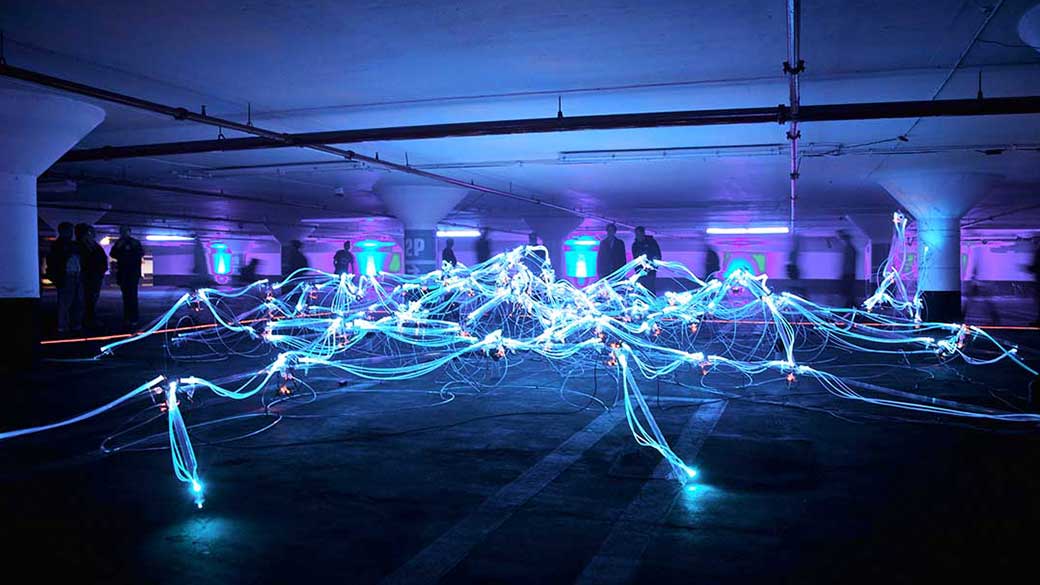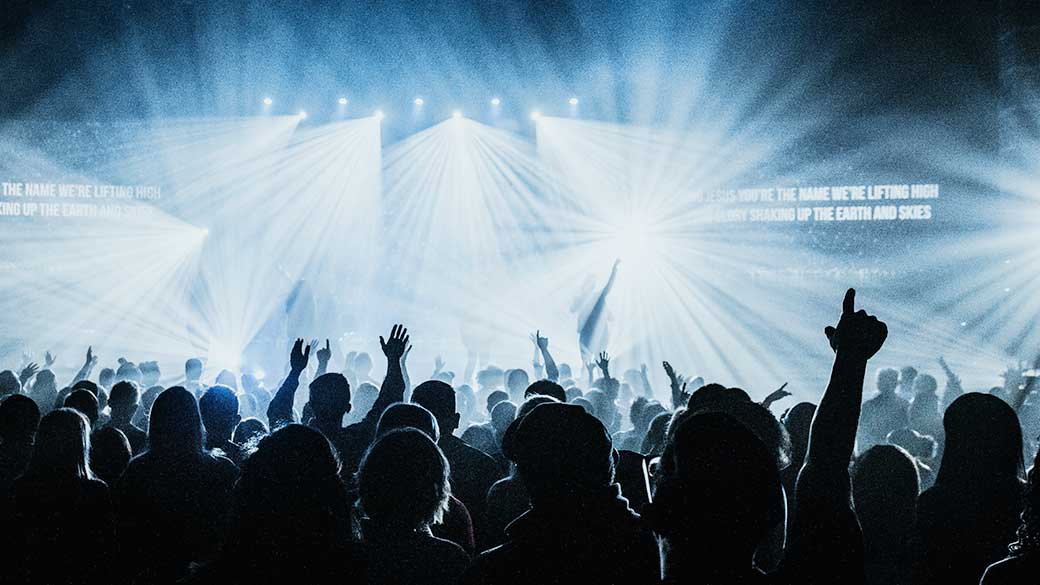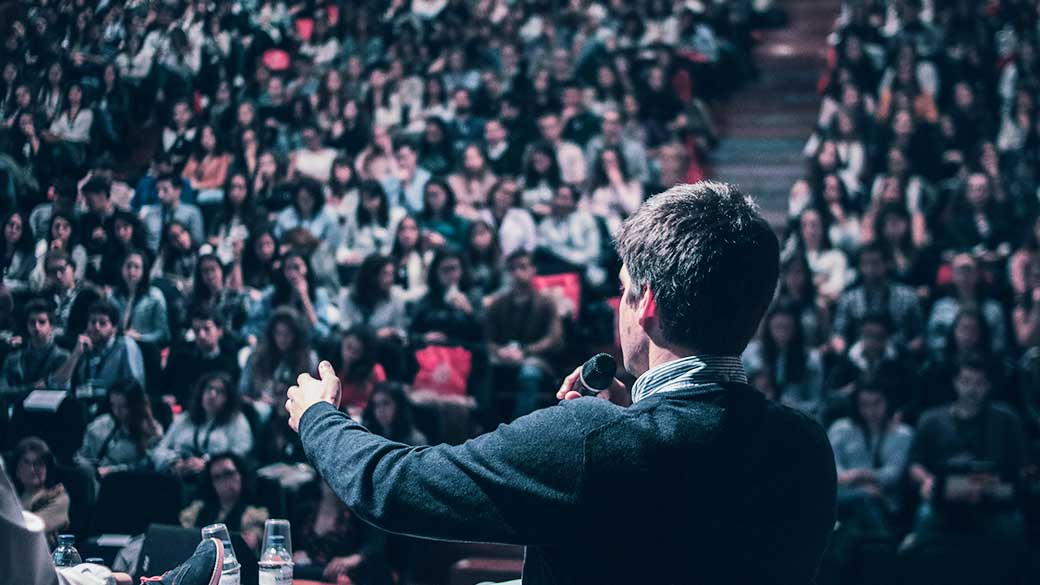
How Virtual Events are Fueled by Virtual Audio (part 1/2)
Content
The coronavirus currently affects everyone in some way. The exciting thing about it is how different the extent can be: It’s brought more movement to the VR scene and there are applications that are actually benefiting from the Covid-19 lockdown beside social media.
Such as the virtual events. The shift to online events has enabled organizations to reach a wider audience and explore hybrid events, combining in-person and virtual components for greater flexibility and engagement.
Even though I have already been able to take a closer look at some VR platforms as a consultant, the providers themselves should not be the topic today.
Choosing the right event platform and event tech is crucial for hosting successful virtual and hybrid events, as these solutions support immersive experiences, integrations, and operational efficiency.
I am more interested in showing what hidden potential immersive audio can bring to such virtual conferences, networking, or whatever events, and where solutions are still needed. Virtual events also open up new possibilities for lead generation by collecting attendee data and providing new engagement opportunities.
Houston, Can You Hear Me?
Ever noticed: a Skype, Zoom Meeting usually do not start with a “Hello”. Instead, you greet each other more with a “Can you hear me?!” in front of your smartphone or computer screen. In virtual meetings, new approaches are needed to connect attendees and maintain attendee engagement, especially as teams become more geographically dispersed.
This phenomenon is similar in virtual reality, only much more complex: Because you are in a virtual space with other participants, you have to think spatially when you listen to the sound. Virtual spaces are specifically designed to help virtual attendees interact, network, and connect attendees more effectively, enhancing the overall experience.

Physical Distance Parameter
At real events, a few meters of distance is enough to make sure that nobody is listening in unintentionally. Reverberation is a major factor that helps to convey a sense of presence. Imagine a staircase where you are having a conversation.
In reality, your own voice and that of the person you are talking to echo through every floor. As a result, our brain directly knows how loud we need to speak and who is likely to hear us.
Unlike in an in person event, physical events, or traditional events—where sound naturally travels and creates a shared auditory environment—virtual environments must simulate these effects to replicate the same sense of presence and spatial awareness.
Voice with virtual reverb
So in reality, we hear our voice twice. One part is emitted through the room, reflected and perceived by our ear. And one part is transmitted directly from the speech organ without detours as bone sound. This also leads to the fact that our own voice sounds so unfamiliar to us on recordings – we simply hear ourselves differently.
In VR, however, the first point is omitted because the voice is not reflected in space. However, it is possible to implement this function, which is quite computationally intensive and is implemented quite complex in games, for example.
Implementing realistic audio in virtual environments also requires careful consideration of technical aspects such as tools, software, connectivity, and equipment to ensure a seamless and immersive experience. We will see what the future brings in terms of games. It could definitely make VR games more fun!
Sound design creates more than just Presence in virtual reality
Now the topics “localization”, “distance” and “presence” have already been addressed.
But especially the last point is missing a decisive factor: The finetuning through sound design. Incorporating immersive content and interactive features such as real-time audio cues and spatial soundscapes can significantly enhance the unique event experience, making virtual events more engaging and memorable for participants.
Multi-channel audio formats, such as 5.1 or 7.1 surround sound, are increasingly being used to create a more realistic sense of space and directionality. These technologies enable interactive experiences that set virtual events apart from traditional formats, allowing attendees to feel more connected and engaged throughout the event.
Ambience sound as a Basis
Even if our voice – as described above – can realistically propagate in virtual space through reverb parameters, our brain still thinks we are in an empty, abstract space. If we hear reverb on our voice, we still don’t really know whether we are in a train station, a concert hall, or a restaurant.
Only when we hear a basic atmosphere, such as clinking cutlery, can our brain correctly classify the place as a restaurant.
In virtual experiences, carefully crafted ambient soundscapes enhance immersion by helping attendees intuitively recognize and engage with different digital environments.
The challenge is therefore the following: Good sound can’t be missing but it can’t be conspicuous either. Some platforms for virtual events use audio objects to create sounds such as birds (outside) or room sounds (inside). However, this is not the most optimal approach, as the sound is easily localized and generates unnecessary attention. Multi-channel audio formats offer better possibilities to breathe life into such spaces.
Dedicated booths in virtual events can also use unique audio cues to attract and engage attendees, making each branded space stand out within the digital environment.

Interactive UX Sounds and Audio Objects
Let’s talk briefly about the “hard sound effects”, i.e. sounds that are triggered by interactions. A good example is steps because these are almost the only sounds we make when we move.
If this is not acoustically translated into VR, it can quickly happen that a person suddenly and unexpectedly stands next to you because you couldn’t hear how they approached you. Customizable avatars can have unique audio cues for their movements, further enhancing the sense of presence and making it easier to identify individuals in a virtual space.
In reality, we usually perceive other people unconsciously. When they stand behind us, we cannot see them, but we can hear them. We are only frightened by this when someone sneaks up on us – the ears simply could not warn us.
Interactive audio features like these also help facilitate networking opportunities in virtual environments by making conversations and connections feel more natural and engaging.
The Tech Behind the Sound: Virtual Event Technology
Virtual event technology has transformed the landscape of online events, making it possible to create truly immersive and engaging experiences for attendees around the globe. As virtual events have become more prevalent, the demand for sophisticated event technology has skyrocketed.
Today’s virtual event platforms are equipped with a suite of advanced features designed to replicate—and even enhance—the dynamics of in-person gatherings.
At the heart of these platforms are technologies like virtual reality (VR), augmented reality (AR), and 3D virtual environments. These tools allow event organizers to create interactive spaces where attendees can move freely, network, and participate in sessions just as they would at a physical event.
The integration of immersive audio is a key component, ensuring that every conversation, keynote, and networking opportunity feels authentic and engaging.
Whether it’s a virtual conference, a product launch, or a virtual trade show, the right event technology can make all the difference. By leveraging 3D virtual environments and real-time audio, event organizers can create unique experiences that keep attendees engaged and connected.
As the technology continues to evolve, we can expect virtual events to become even more interactive, accessible, and impactful for audiences worldwide.
Metaverse Events and the Rise of Sonic Worlds
Metaverse events represent the next frontier in virtual event experiences, taking place within expansive virtual worlds that are limited only by imagination and technology.
Unlike traditional virtual events, metaverse events immerse attendees in interactive environments where every element—from the visuals to the sound—contributes to a sense of presence and community.
One of the most exciting developments in this space is the creation of sonic worlds. These are carefully crafted audio environments that go beyond simple background music, using advanced sound design to create dynamic, interactive soundscapes.
In a metaverse event, attendees might hear the subtle hum of a virtual expo hall, the distant chatter of other attendees, or the immersive sounds of a keynote session—all designed to enhance the overall experience.
With the integration of virtual reality and augmented reality, these sonic worlds become even more engaging. Attendees can explore different areas of a virtual world, each with its own unique audio signature, making the experience feel both personal and communal.
As new technologies continue to emerge, the possibilities for creating engaging, interactive experiences in metaverse events are virtually limitless, offering event organizers powerful new ways to connect with their audiences.
Augmented Reality: Blending Real and Virtual Soundscapes
Augmented reality (AR) is redefining how sound is experienced in virtual events by seamlessly blending real and virtual soundscapes. This technology allows event organizers to overlay digital audio elements onto the real world, creating a hybrid experience that feels both familiar and innovative.
In the context of virtual events, AR can be used to simulate the acoustics of real-world locations, such as the lively ambiance of a conference room or the immersive atmosphere of a concert hall. By carefully designing these audio environments, event organizers can help attendees feel more connected and engaged, even when participating from remote locations.
The use of AR-driven soundscapes not only enhances the sense of presence but also helps to combat the isolation that can sometimes accompany online events. Attendees can experience interactive audio cues, spatial sound effects, and even personalized audio content that responds to their actions within the virtual space.
As AR technology continues to advance, the potential for creating truly engaging and memorable virtual event experiences will only grow, offering new ways to captivate and connect audiences in the digital world.
Speech intelligibility is more important than Speech quality

Language is an important medium for communication on virtual events platforms. Nevertheless, the voices of the conversation partners usually sound a bit like “over the good old telephone”. The reason for this is data reduction. Several factors, including data reduction and technical limitations, impact speech quality in virtual events.
Hearing tests and psychoacoustic analyses have shown that we do not need to hear all frequencies in order to interpret speech content. Artificial intelligence is increasingly being used to improve speech intelligibility and enhance the overall audio experience in virtual environments.
With Social-VR this means that all voices sound rather electronic and tinny. The sound engineer would also speak of a “bit crusher effect”. In the end, that’s exactly what is done: the bit rate is crushed.
As a best practice, it is important to measure success by evaluating audio quality and user engagement to ensure effective communication in virtual events.
The hardware is not the Problem
And the built-in microphones of VR glasses like the “Oculus Quest” or “Oculus Go” don’t sound too bad. But the priority is the real-time audio transmission – so the data packets must be kept as small as possible in order to continue to be transmitted in an understandable and seamless manner for virtual events.
Currently, the first audio codecs are already being developed specifically for virtual events software. Thus, on the platform of the provider “High Fidelity”, many people in a room can find their friends just by hearing. “TivoliCloud-VR” has already licensed the codec. So there is a lot happening in the backend of the tools at the moment.
There are no challenges if you can avoid them
However, please make sure to observe an audio netiquette: Everyone involved should wear headphones to avoid crosstalk between the audio playback and their own microphone!
If the sound is played via loudspeakers, it goes straight back into the microphone. This means that conversation partners hear each other with a slight time lag and a rather unpleasant feedback is created. You know it from virtual telephoning with Skype or Zoom.
The whole thing can technically be solved with noise reduction, but it’s best not to let this obstacle arise in the first place to get started 😉
When participating in virtual events using mobile devices, ensure your device’s audio settings are properly configured to maintain clear communication and minimize feedback. Additionally, collecting post-event feedback is essential to evaluate and improve the virtual audio experience for future events.
Read more about the advantages of 3D audio